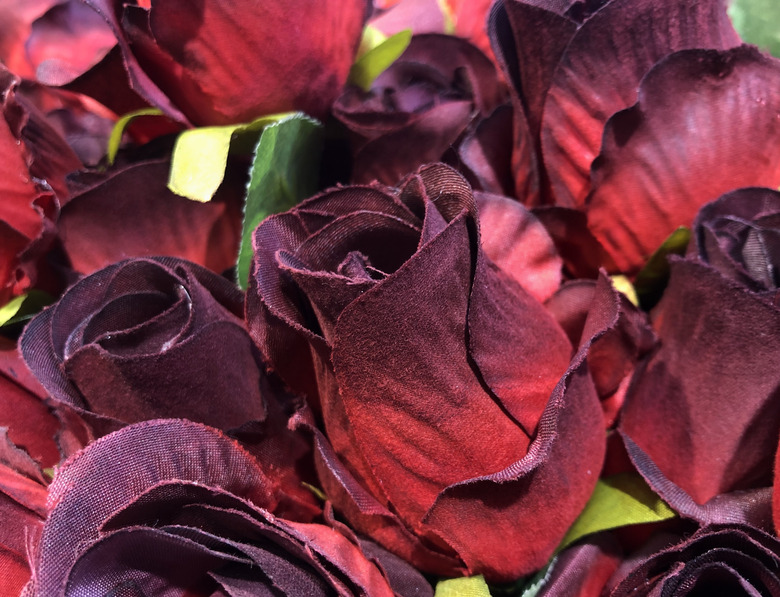How To Grow A Black Rose Plant
We may receive a commission on purchases made from links.
Roses (Rosa spp.) are classic additions to any garden, but for the more adventurous, a black rose plant can add a touch of drama among pink and blush tone rose bushes. A true black rose plant is really a very deep, dark red, but from a distance, a plant like Rosa 'Black Prince' (USDA plant hardiness zones 5 through 9) looks like its namesake color. Like all rose bushes, growing black rose plants in your garden requires sun, soil and patience.
What Is a Black Rose?
What Is a Black Rose?
While a black rose flower carries the name, the petals themselves aren't really black. They're usually a very deep red or have a purple tint, more maroon than pure black. The clustering petals of the black rose flower give the appearance of a black hue from a distance and create a striking look when planted with rose bushes in traditional hues of hot pinks and bright reds. A black rose plant like the Black Prince rose appears as a velvety reddish-purple when in full bloom.
How to Grow Black Roses
How to Grow Black Roses
Growing a black rose plant from an existing container-grown seedling bush or a dormant bare-root rose bush is the easiest way to start your rose garden. Because of the thorns on Black Prince, protect your hands with gardening gloves when handling your new rose plant. Choose an area of your garden that receives 5 to 6 hours of direct sunlight each day. The soil must be loose, with drainage away from your black rose bush roots. Overwatering or continuously damp soil will harm your plant.
Bare-root roses must be soaked overnight before planting, while container roses require their roots shaken loose from the tight compact soil before transferring into the ground. Space your black roses apart so they have room to grow in the future. Dig a wide hole of 15 to 18 inches and as deep as the bottom of the rose roots.
Plant your black rose bush by returning the loose soil you removed to dig the hole, and add a fertilizer made specifically for roses when planting. Soak the soil with water. Roses do well with mulch to help them grow, so add mulch around the base of your plant, making sure to pull away the mulch from the stem so that it's not touching the canes. Be sure to water your black roses twice a week during the hottest months of the year.
Sowing Black Rose Seeds
Sowing Black Rose Seeds
Propagating a black rose plant from seeds requires a little more patience than planting a seedling. Rose seeds go through a state of cold stratification before any new germination can occur. Depending on the category of your rose, it may be necessary to soak the seeds for 12 to 24 hours and then leave your black rose seeds in a refrigerator for up to 10 days to break the dormancy cycle. It's important to note that any seeds you collect from a black rose plant may not grow into a plant that also bears black roses.
This can also be achieved by sowing your black rose seeds in shallow seed trays with 3 to 4 inches of rich, moist soil. After the seeds are sown, the seed trays can be covered with plastic wrap or a plastic bag and stored in the refrigerator for 10 to 12 weeks. This imitates the natural process of cold stratification on the seeds. When planting outside in the late summer or fall, the seeds will naturally go through the cold stratification process with the seasons and sprout in spring.
Timeline for Growing From Seeds
Timeline for Growing From Seeds
A seed-grown black rose plant can take as long as two to five years to reach full maturity. When growing a black rose bush from seed, expect to see sprouting growth within two to three weeks of exposure to sun and water.
If you sow your black rose seeds in seed trays and refrigerate them for stratification, they'll need a warm environment after refrigeration for the seeds to thrive. Young rose bushes need at least 70-degree weather and five to six hours of full sunlight to grow.
Introduce your seed trays to direct light through an indoor plant light or a hydroponic lighting system, or place them directly in the sunlight. Don't overwater your young seeds and seedlings; this can damage the roots.
